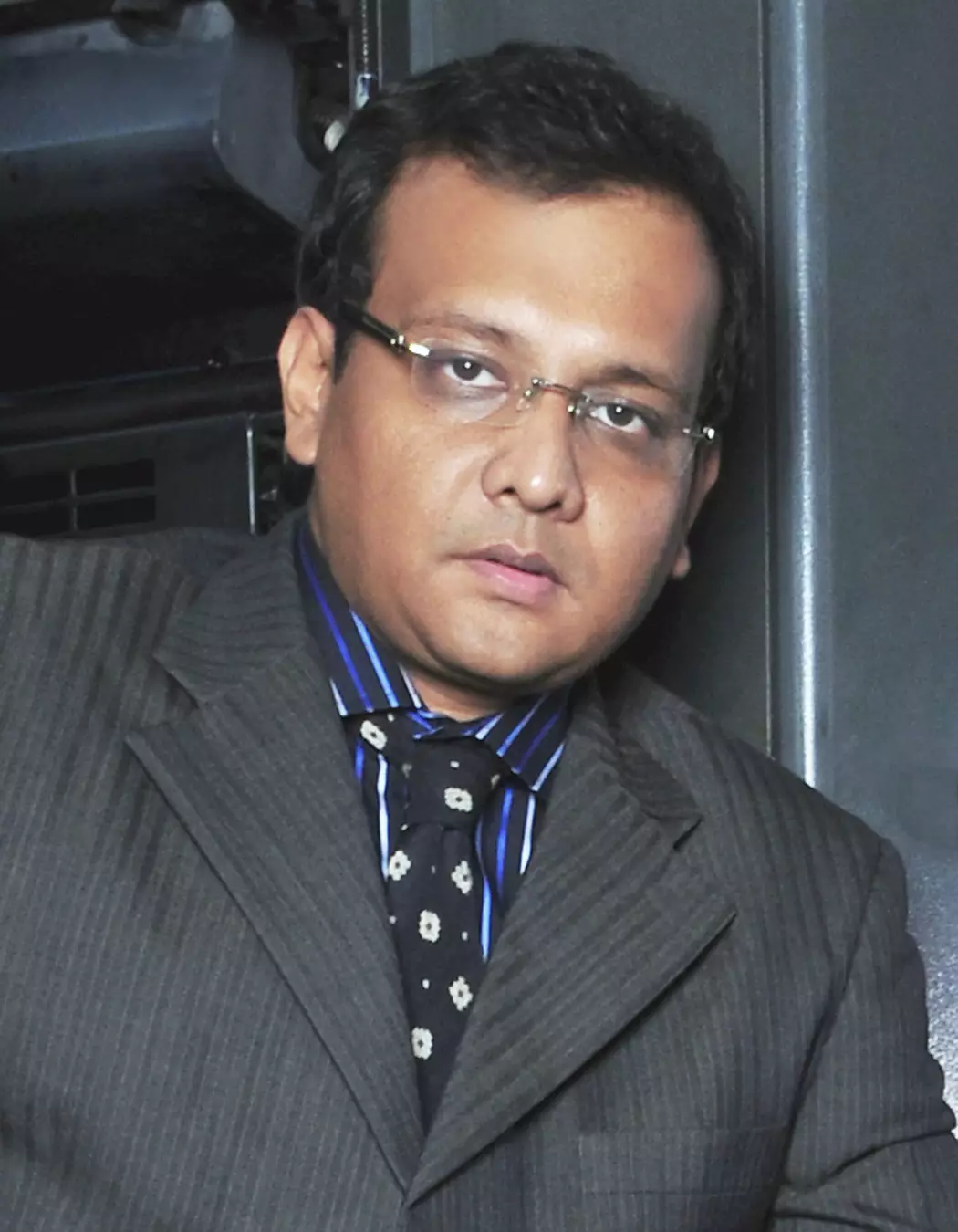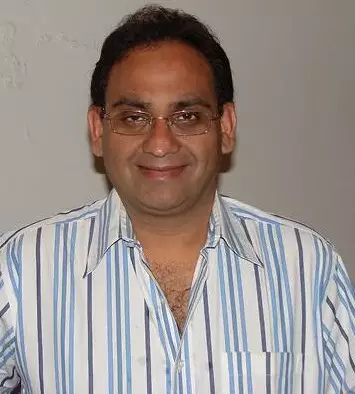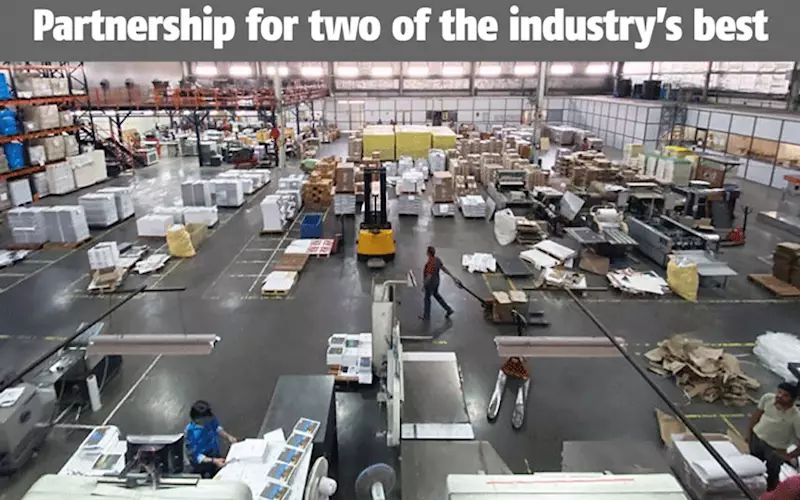Partnership for two of the industry's best - The Noel D'Cunha Sunday Column
The management of New Jack Printing Press and Vyoma Graphics were contemplating to venture into the packaging space. Then the pandemic came.
“There couldn’t be a better time than this,” says Saubhagyanidhi Seksaria of New Jack. It became the moment of truth for the two companies’ diversification plan.
Read on...
14 Mar 2021 | By Noel D'Cunha
As they say, it can be brutal out there. It was tough even before the pandemic, but the pandemic has made it just that much tougher. While low margins continue to haunt, and newer ways of life during and even today are the order of the day, businesses in the print sector simply can’t afford to stand still.
The pandemic has disrupted businesses and disturbed the entire supply chain across industries, but there’s another ‘p-word’, a pivot that is making print businesses switch their offering, through diversification, or like those printers which have shown themselves willing to make major investments to meet changing market needs. In the last Sunday Column, we saw how Metro Printers in Surat responded to the changes in the traditional print mindset in Gujarat, with a thoughtful new work process.
Vyjack Printpack was one such pivot for Mumbai’s New Jack Printing Press and Pune’s Vyoma Graphics.
What could be a better time than this asks Saubhagyanidhi Seksaria of New Jack Printing Press who, along with Niten Shah of Vyoma Graphics, have been contemplating to venture into the packaging space. The reason: the growth trajectory vis-a-vis commercial printing, which has limited scope for growth. “The idea of the joint venture was to club our resources and mitigate the risk. Being together gives us better leverage to set up a successful “packaging company,” says Seksaria.


(l-r) Saubhagyanidhi Seksaria and Niten Shah
The New Jack legacy
The New Jack legacy inspires Seksaria. The company was established in 1942 and at one point was one of the biggest presses, East of Suez-Canal employing over a thousand employees. Over a span of eight decades, it not only survived but excelled, adapting to all the changing technological, economical and market conditions. “I draw a lot of leadership strength from its glorious history.”
Under the leadership of Shrinarayan Seksaria, managing director, New Jack moved from a 40,000 sqft facility at Worli, to a lean and mean 20,000 sqft. plant in Goregaon East and later a 50,000 sqft facility in Bhiwandi. “As a company, we have seen and adapted to a lot of unprecedented times and that gave me the strength to not only survive the Covid crisis but also to take it by its horn, by creating and investing in Vyjack Printpack. This in a way is a tribute to the legacy of New Jack,” says Seksaria.
From a business point of view, new developments are happening in the supply chain and customers being more open to giving opportunities to new credible vendors. Also, Seksaria says, commercial printing might never be the same post-Covid. He explains, "Therefore, these were ideal times to re-think our current businesses - and to diversify into something new, which led to the setting up of the new company."

50,000 sq-ft plant in Bhiwandi
Transformation time
Vyjack is a new legal entity and has an independent board consisting of members of both companies, with a collective experience of over one hundred years. The job-profile of each board member is pre-defined based on their core strength. It covers the gamut of the new enterprise. “These times have also taught us to carry on with our operation remotely, despite all physical barriers. This will hold us in good stead,” says Seksaria.
While Vyoma Graphics, Pune operations continue independently sticking to the commercial segment, New Jack Printing Press has exited its printing vertical totally, paving way for Vyjack Printpack.” The 50,000 sqft Bhiwandi plant of New Jack in Bhiwandi, Thane district, becomes its main manufacturing unit. The administrative and sales offices will operate from Mumbai while the marketing office from Pune.
The day-to-day functioning of the factory will be handled by the factory manager, who in turn has various shop-floor assistant-managers in every section reporting to him. “Since one of our company’s entire operations had been consumed in the new venture, the structure broadly remains the same as that of our old established company with new improvements,” explains Seksaria.
The company will manufacture mono-cartons for the pharma industry to begin with. “The food packaging space also looks interesting,” says Seksaria.
The facility equipped with Heidelberg’s Suprasetter CTP and Prinect workflow will interface with KBA Rapida offset presses, a six-colour and a five-colour with coaters. The die-cutting operation will be carried on Excel Maxima, even as the company evaluates a 105-cm size die-cutter buy. Folding and glueing are handled on the Bobst Visionfold fitted with a Baumer HSS glueing and quality control system. Besides this, the company also has the usual battery of other ancillary machines.

Route map for Vyjack's future
The new company hopes to first efficiently use its existing installed capacity to the fullest. The average EBITDA of top packaging companies is around 14% with a YOY top-line growth of around 20%. “Though we are a small company, our initial intention is to benchmark ourselves in terms of financial prudence with the leaders. Once we get our math right and are also able to match the growth trajectory of other established packaging companies, then scaling up will automatically follow,” says Seksaria.
But both New Jack and Vyoma have been commercial print specialists. Packaging, however, needs a different mind-set and a completely different workflow. It’s not enough to just offer different services, clients need to have the belief that you can deliver.
“I agree,” says Seksaria, adding, “We at New Jack were doing packaging once upon a time for Cadbury India, Parke-Davis and others. So, at the management level, it is not new to us and we know what to expect. But as an organisation, the culture and mindset for catering to the packaging sector will follow the usual learning curve. We have a smart team, and hopefully, they will adapt to it quickly.”
There will obviously need to be an element of investment to grow the business. Hence, Seksaria is talking to a few leading solution providers to leveraging on their advanced packaging know-how and work-flow, especially at the pre-press level. “This will enable us to give quality and credible solutions to our clients. Getting the right technology with a lot of hard work is the key and we are working towards it,” concludes Seksaria.












 See All
See All